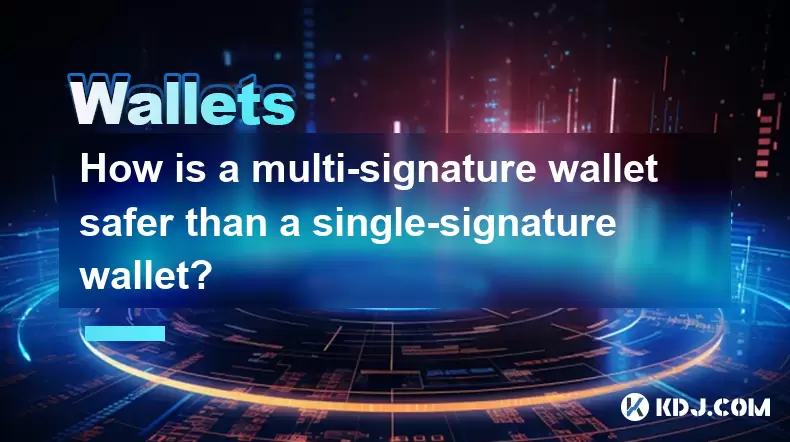-
 Bitcoin
Bitcoin $114200
0.00% -
 Ethereum
Ethereum $3637
0.56% -
 XRP
XRP $2.950
-2.01% -
 Tether USDt
Tether USDt $0.9999
0.02% -
 BNB
BNB $761.0
0.55% -
 Solana
Solana $164.1
-1.38% -
 USDC
USDC $0.9999
0.02% -
 TRON
TRON $0.3332
0.36% -
 Dogecoin
Dogecoin $0.2012
-0.52% -
 Cardano
Cardano $0.7261
-1.41% -
 Hyperliquid
Hyperliquid $37.62
-2.13% -
 Stellar
Stellar $0.3930
-2.65% -
 Sui
Sui $3.441
-0.16% -
 Bitcoin Cash
Bitcoin Cash $563.8
0.70% -
 Chainlink
Chainlink $16.50
0.09% -
 Hedera
Hedera $0.2424
-0.14% -
 Ethena USDe
Ethena USDe $1.001
0.01% -
 Avalanche
Avalanche $22.20
0.00% -
 Litecoin
Litecoin $118.0
-2.48% -
 UNUS SED LEO
UNUS SED LEO $8.991
0.12% -
 Toncoin
Toncoin $3.195
-3.87% -
 Shiba Inu
Shiba Inu $0.00001217
0.12% -
 Uniswap
Uniswap $9.674
-0.21% -
 Polkadot
Polkadot $3.633
1.00% -
 Monero
Monero $295.3
-0.82% -
 Dai
Dai $0.9999
0.00% -
 Bitget Token
Bitget Token $4.321
-0.41% -
 Cronos
Cronos $0.1392
0.73% -
 Pepe
Pepe $0.00001027
-0.89% -
 Aave
Aave $258.5
0.32%
How is a multi-signature wallet safer than a single-signature wallet?
Multi-signature wallets enhance crypto security by requiring multiple approvals, reducing theft risks and offering better control than single-key wallets.
Jun 21, 2025 at 07:56 pm

Understanding Signature Mechanisms in Cryptocurrency Wallets
In the world of cryptocurrency, securing digital assets is paramount. One of the core aspects of this security lies in the signature mechanism used by wallets. A single-signature wallet requires only one private key to authorize a transaction. This means that if an attacker gains access to that single private key, they can fully control and transfer the funds associated with the wallet.
On the other hand, a multi-signature wallet (often referred to as multisig) requires multiple private keys to sign off on a transaction before it can be executed. Typically, these wallets are configured with a setup like "2-of-3" or "3-of-5", meaning that out of a set number of keys, a minimum threshold must approve any outgoing transaction. This introduces a distributed authorization system, which inherently enhances the level of protection for the stored cryptocurrency.
Single Point of Failure in Single-Signature Wallets
The primary vulnerability of a single-signature wallet is its reliance on one private key. If that key is compromised—whether through phishing, malware, or physical theft—the entire balance of the wallet becomes vulnerable. There is no secondary verification or additional layer of security to prevent unauthorized transactions once the private key is exposed.
This makes single-signature wallets particularly risky for individuals or organizations holding significant amounts of crypto. Even experienced users can fall victim to sophisticated attacks that target keylogging, screen capture, or clipboard manipulation. The absence of redundancy or collaborative approval means there's no way to recover funds after an unauthorized transfer occurs.
Distributed Control and Enhanced Security in Multi-Signature Wallets
A multi-signature wallet mitigates many of the risks inherent in single-signature systems by distributing control across multiple private keys. For example, in a 2-of-3 configuration, even if one key is compromised, an attacker still cannot complete a transaction without at least one more signature. This multi-layered defense drastically reduces the likelihood of a successful breach.
Moreover, multi-signature setups allow for strategic distribution of keys. Users can store different keys in separate locations or devices—such as one on a hardware wallet, another on a mobile device, and a third on paper. Some advanced users even distribute keys among trusted parties, ensuring that no single entity has full control over the funds. This decentralized approach to asset management not only improves security but also fosters trust in collaborative environments.
Use Cases Where Multi-Signature Wallets Excel
Organizations, especially those managing pooled funds or operating under shared ownership structures, benefit greatly from using multi-signature wallets. For instance, businesses handling crypto payments often configure their wallets with a 2-of-3 model where one key is held by finance, another by compliance, and a backup held offline. This ensures that no single department can unilaterally move funds, thereby reducing internal fraud risk.
Similarly, joint accounts between family members or business partners can use multi-signature mechanisms to ensure mutual consent before any transaction takes place. Inheritance planning is another area where multisig shines; a user may set up a wallet requiring two signatures, with one key given to a trusted heir and another kept in cold storage, ensuring smooth succession without risking premature access.
Implementation Steps for Setting Up a Multi-Signature Wallet
Setting up a multi-signature wallet involves several steps that require careful attention to detail. First, users must choose a wallet provider that supports multisig functionality, such as BitGo, Electrum, or GreenAddress. Once selected, the next step is determining the required number of keys and the signing threshold (e.g., 2-of-3).
After configuration, each participant generates their own private key and corresponding public key. These public keys are then combined to create the multisig address. It’s crucial to securely back up all private keys and store them separately to avoid loss or compromise. When initiating a transaction, each required signer must independently approve it using their private key. The final transaction is broadcast to the blockchain only after meeting the necessary threshold.
Here is a detailed breakdown:
- Choose a multisig-compatible wallet platform.
- Determine the signing structure (e.g., 2-of-3).
- Generate individual public and private keys for each participant.
- Combine the public keys to form the multisig address.
- Securely store private keys in diverse, secure locations.
- Initiate a transaction and collect signatures from required participants.
- Broadcast the signed transaction to the network once the threshold is met.
Risk Mitigation Through Multi-Signature Technology
By design, multi-signature technology adds a layer of risk mitigation that single-signature systems simply cannot offer. Since no single point of failure exists, attackers face significantly higher barriers when attempting to steal funds. Even in cases where one key is compromised, the remaining keys act as a safeguard, preventing unauthorized transfers.
Additionally, multi-signature wallets provide a clear audit trail of approvals. Each transaction must be signed by a specified number of participants, making it easier to trace and verify who authorized what. This feature is especially useful in corporate settings where accountability and transparency are essential.
Frequently Asked Questions
Q: Can I convert my existing single-signature wallet into a multi-signature wallet?
Yes, you can migrate your funds from a single-signature wallet to a newly created multi-signature wallet. However, this process involves generating a new multisig address and transferring your funds to it. Be sure to understand the fees and confirmations involved before proceeding.
Q: Are multi-signature wallets supported by all cryptocurrencies?
No, not all cryptocurrencies support multi-signature functionality natively. Bitcoin, Ethereum, and Litecoin do support multisig, but some altcoins may lack this feature or have limited implementation. Always check compatibility before setting up a multisig wallet.
Q: What happens if I lose one of the private keys in a multi-signature setup?
If you lose a private key but still meet the signing threshold with the remaining keys, you can still access and manage your funds. However, if the number of lost keys exceeds the threshold, you will permanently lose access to the wallet. This underscores the importance of secure backups.
Q: Is a multi-signature wallet suitable for everyday personal use?
While multi-signature wallets offer enhanced security, they can be more complex and less convenient for frequent small transactions. They are best suited for long-term storage or high-value holdings. Casual users may find single-signature wallets more practical for daily spending, while reserving multisig for larger balances.
Disclaimer:info@kdj.com
The information provided is not trading advice. kdj.com does not assume any responsibility for any investments made based on the information provided in this article. Cryptocurrencies are highly volatile and it is highly recommended that you invest with caution after thorough research!
If you believe that the content used on this website infringes your copyright, please contact us immediately (info@kdj.com) and we will delete it promptly.
- Brazil, Bitcoin, Hearing Date: Is Brazil About to Embrace Bitcoin?
- 2025-08-06 20:30:38
- Stabull DEX on Base Chain: A New Era for Stablecoins?
- 2025-08-06 20:47:53
- WeWake Finance: Is This the Crypto ROI Opportunity You've Been Waiting For?
- 2025-08-06 21:10:18
- PancakeSwap, US Stocks, and Perpetual Contracts: A New Frontier in DeFi
- 2025-08-06 21:10:18
- South Korea, Stablecoins, and Online Banks: KakaoBank's Bold Move
- 2025-08-06 20:47:53
- PROVE the Future: Price Predictions & Succinct's ZK Revolution (2025-2030)
- 2025-08-06 20:30:38
Related knowledge

How to add TRC20 token to Trust Wallet?
Aug 04,2025 at 11:35am
Understanding TRC20 and Trust Wallet CompatibilityTrust Wallet is a widely used cryptocurrency wallet that supports multiple blockchain networks, incl...

How to securely store my Trust Wallet recovery phrase?
Aug 06,2025 at 07:14am
Understanding the Importance of Your Trust Wallet Recovery PhraseYour Trust Wallet recovery phrase, also known as a seed phrase or mnemonic phrase, is...

How to change the currency in Trust Wallet?
Aug 06,2025 at 07:14pm
Understanding Currency Display in Trust WalletTrust Wallet does not allow users to change the base currency used for valuation in the same way traditi...

Why am I receiving random tokens in my Trust Wallet (dusting attack)?
Aug 06,2025 at 10:57am
What Is a Dusting Attack in the Cryptocurrency Space?A dusting attack occurs when malicious actors send minuscule amounts of cryptocurrency—often frac...

What is a watch-only wallet in Trust Wallet?
Aug 02,2025 at 03:36am
Understanding the Concept of a Watch-Only WalletA watch-only wallet in Trust Wallet allows users to monitor a cryptocurrency address without having ac...

Why can't I connect my Trust Wallet to a DApp?
Aug 04,2025 at 12:00pm
Understanding DApp Connectivity and Trust WalletConnecting your Trust Wallet to a decentralized application (DApp) is a common process in the cryptocu...

How to add TRC20 token to Trust Wallet?
Aug 04,2025 at 11:35am
Understanding TRC20 and Trust Wallet CompatibilityTrust Wallet is a widely used cryptocurrency wallet that supports multiple blockchain networks, incl...

How to securely store my Trust Wallet recovery phrase?
Aug 06,2025 at 07:14am
Understanding the Importance of Your Trust Wallet Recovery PhraseYour Trust Wallet recovery phrase, also known as a seed phrase or mnemonic phrase, is...

How to change the currency in Trust Wallet?
Aug 06,2025 at 07:14pm
Understanding Currency Display in Trust WalletTrust Wallet does not allow users to change the base currency used for valuation in the same way traditi...

Why am I receiving random tokens in my Trust Wallet (dusting attack)?
Aug 06,2025 at 10:57am
What Is a Dusting Attack in the Cryptocurrency Space?A dusting attack occurs when malicious actors send minuscule amounts of cryptocurrency—often frac...

What is a watch-only wallet in Trust Wallet?
Aug 02,2025 at 03:36am
Understanding the Concept of a Watch-Only WalletA watch-only wallet in Trust Wallet allows users to monitor a cryptocurrency address without having ac...

Why can't I connect my Trust Wallet to a DApp?
Aug 04,2025 at 12:00pm
Understanding DApp Connectivity and Trust WalletConnecting your Trust Wallet to a decentralized application (DApp) is a common process in the cryptocu...
See all articles

























































































